News
Apple iPhone 16 might get new camera panel; iPhone 16 Pro may get pressure-sensitive camera button: Report
Published
8 months agoon
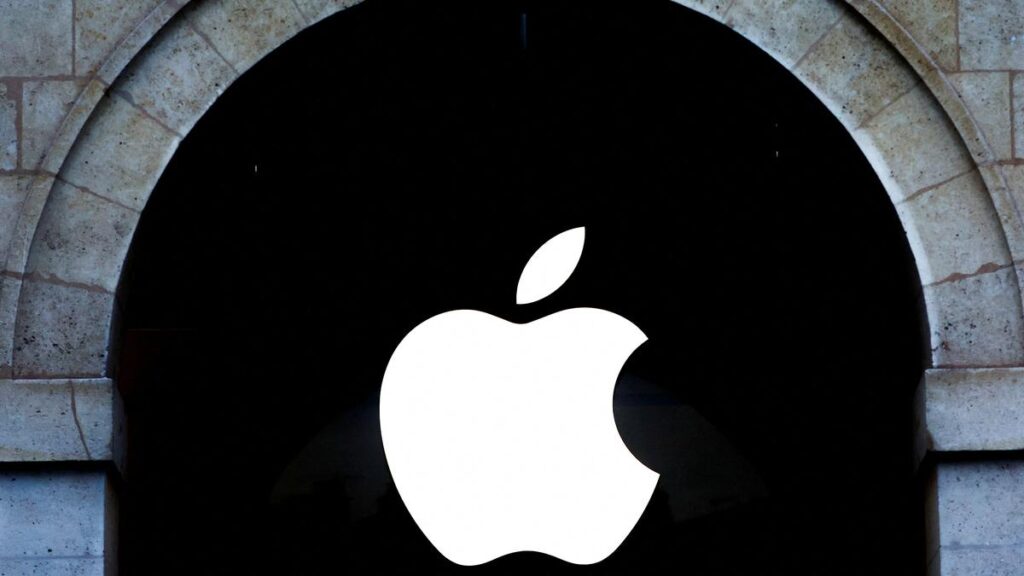
The iPhone 16 launch event is expected to take place in September [File] | Photo Credit: REUTERS
Apple’s iPhone 16 line-up that is expected to release in September could see noticeable hardware and software changes as the premium gadget-maker primes the devices for generative artificial intelligence features while also enhancing the camera capabilities, per tech outlet The Verge.
For example, the base variant of the iPhone 16 could get a fresh camera panel design, while the Pro model could get a new camera button that mimics the feel of a DSLR camera and is sensitive to the user’s finger pressure, reported the outlet, based on leaks and rumours.
The Apple iPhone 16 Pro could also get a bigger screen than its predecessor.
The phones will need enhanced software capacity in order to run the energy-intensive on-device tasks involving generative AI. Apple’s own package of AI integrations, which it calls Apple Intelligence, is expected on all the phones from the iPhone 16 line-up.
Apple is yet to formally confirm or deny the rumours.
You may like
Business
ChatGPT: Here’s All You Need to Know About the AI Chatbot
Published
7 months agoon
September 30, 2024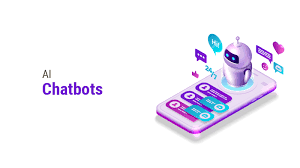
The internet is abuzz with the hype around ChatGPT, one of the most recent advancements in technology. With the ChatGPT AI innovation gaining approximately one million users in just a few months from its launch in November 2022, it seems that its market is geared up to expand at an even faster rate.
What is ChatGPT?
ChatGPT (Generated Pre-trained Transformer) is an AI-based chatbot system that uses NLP (Natural Language Processing) to generate conversations. It was developed by San Francisco-based artificial intelligence company OpenAI.
ChatGPT, a Large Language Model (LLM), has a remarkable ability to interact in a conversational dialogue form. It is trained to follow instructions in a prompt and provide a detailed response. The system’s dialogue format makes it possible to answer follow-up questions (if any), challenge incorrect premises, admit mistakes, and reject inappropriate requests.
ChatGPT is trained using Reinforcement Learning from Human Feedback (RLHF), using the same method as InstructGPT, a sibling model of ChatGPT, but with minute differences in the data collection setup.
An initial model was trained using supervised fine-tuning: human artificial intelligence trainers provided conversations wherein they played both sides – as an AI assistant and as the user. The trainers were given access to model-written suggestions to help them in composing their responses. Then, this new dialogue dataset was mixed with the InstructGPT dataset, which was then transformed into a dialogue format.
What can you do with ChatGPT?
Aside from responding to human queries, ChatGPT can also be used to do the following:
1. Create Content
ChatGPT can be used for brainstorming content ideas on specific topics or keywords and creating content. It can quickly write content based on a prompt. This includes topic outlines, blog articles, social media captions, and anything content related.
2. Generate AI Art
Since the introduction of artistic AI tools like DALLE-2 and Midjourney, AI art generators are being leveraged for creating creative images. An AI Art Generator is a system capable of creating videos, images, or music based on a given text prompt. The system is then trained using various image-text pairs.
Moving ahead, ChatGPT has great potential to produce detailed AR (Augmented Reality) scenarios when prompted.
3. Write code and debug
ChatGPT can process and write codes and help the developers debug codes. For example, it can be used for generating SQL queries. As it is important for data scientists to be well-versed in SQL, they can use ChatGPT to enhance their SQL skills.
4. Manage and manipulate data
Usually, it is challenging to sort, manage, and organize unstructured data, making it redundant. ChatGPT can be helpful here. It can convert unstructured data into a structured format by manipulating the data.
For example, ChatGPT can add data to a table, make indexes, and understand JSON queries.
5. Explain and tutor
You would be surprised to see how well ChatGPT can explain code, words, and any other topics. As ChatGPT’s AI tutor capabilities develop and become refined, it could dramatically alter the way students would use the tool for academic purposes.
5 ways SEO professionals can use ChatGPT
We’ve outlined a few of the many ways SEO professionals can leverage their work using ChatGPT:
1. Keyword research and analysis
Practically, ChatGPT makes keyword research effortless. All you need to do is open the chatbot, type a few of your target keywords and ask for the related ones. ChatGPT will prepare a list of related keywords based on its understanding of the search results.
SEO professionals can also use it to determine the competition for various keywords.
2. Content strategy development
You can ask the ChatGPT tool to outline a content marketing strategy. While it does not give granular plans (though you can probably ask for the same), it does provide a high-level set of tactics for the content related to a specific field.
A concerning factor while employing a chatbot-created content strategy is that your close competitors may be doing the same thing. For example, companies in the AI domain may be creating nearly identical blogs about common topics like “the advantages of AI”, “how can AI SAAS companies improve efficiency”, etc. – which means that the risk of duplication is not impossible.
3. A better understanding of search intent
This is one of the most interesting SEO-related potentials of ChatGPT – its ability to understand the search query properly and look beyond the words to the intent of a specific search.
Google also tries to do this and has dramatically improved over the lifespan of the search engine, but to quote a tweet by Kieran Flanagan, “Google takes your query and attempts to answer it. ChatGPT takes your query and will often improve upon it.”
Moreover, ChatGPT’s learning ability will allow it to develop a greater understanding of every search’s intent, sometimes even providing the information the searcher wasn’t even aware that they were looking for.
And as most SEO professionals are aware, shaping content to answer a question in a better way will shoot up the rankings. ChatGPT can help you do that.
4. Composing and managing analytics reports
Providing data and preparing reports and spreadsheets are important for marketers and companies to prove that their efforts are making a difference. However, sometimes such tasks can get overwhelming. ChatGPT can be a real game-changer in cases like this. Moreover, its functionality can help you identify new ranking opportunities that might get missed out.
Let’s suppose you want to compose regular expressions (regex) for analytics reports such as Google Search Console or Google Analytics, but you do not have a strong programming and technical background. This can be difficult when done manually. This is where ChatGPT enters: it can do the job for you.
For example, you want to filter a report using specific words to identify opportunities to broaden your ‘how-tos’ or ‘what is’. All you need to do is go to ChatGPT and enter the correct prompt:
“Compose regular expression which starts with “How To” or “What is” case insensitive using RE2 syntax” and it will get the job done instantly.
ChatGPT allows anyone to use the chatbot to generate a list automatically.
5. Composing complex spreadsheet formulas
People often struggle with Excel and Google Sheets as they find it difficult to compose spreadsheet formulas. You need time to find the exact function name you need and then spend time figuring out how to make it work.
ChatGPT can save you from the headache of parsing data and writing formulas. You can simply enter a command like:
“Google Sheet formula which copies all rows from sheet1 where column “A” contains the word “iPhone” and voila, it will give you the solution.
READ: SEO 101: A Beginners’ Guide to Understanding SEO
Will Language Models replace Google Search?
In 2017, Google itself created an AI chatbot called LaMDA. The performance of this chatbot was so close to a human conversation that a Google engineer claimed that LaMDA was sentient.
Given how these LLMs can answer most questions, is it far-fetched that the technical giants will replace traditional search with an AI chatbot in the future?
Well, technology still has a long way to go.
Currently, the users are required to confirm the information from authentic sources before they trust the ChatGPT replies. And, verifying ChatGPT answer’s accuracy takes effort because unlike Google, it uses text without any citations or links.
Moreover, the current implementation of ChatGPT seems to be a tool that will need the purchase of credits to before it can be used.
Nonetheless, it is fair to envision a hybrid (search and chatbot) future for search. As ChatGPT is making progress, Google is also building LLMs of its own and using artificial intelligence extensively in search algorithms.
Is ChatGPT free to use?
Currently, during its “research preview” phase, ChatGPT is free to use. The chatbot is open for all users to try out and provide feedback on the accuracy of the responses.
The road ahead
While generative AI proves to be a game-changer in numerous tasks and areas, there is a strong need to govern these new innovations as well as their impact on society and the economy.
The discussions between controlled and centralized adoption with firm ethical boundaries on one hand vs. faster innovation and decentralised distribution, on the other hand, will be essential for the generative AI community in the coming years.
This task is not only reserved for private companies. It is equally important for the policymakers and the civil societies to weigh in on, including disruption of labour markets, licensing, legitimacy of scraped data, copyright, and the potential for either biased or otherwise harmful content, misinformation, and so on.
Only when solid checks and balances are in place, more thoughtful and beneficial expansion of generative AI products and technologies can be achieved.
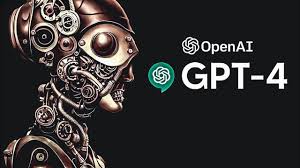
You could say 2024 is the year of Artificial Intelligence (AI). With almost every industry leveraging the power of AI, one name is chanted more than others – Chat GPT.
GPT-4, OpenAI’s latest language model, is making waves in the world of artificial intelligence. It’s more advanced than its predecessor, GPT-3.5, and you can access it through a subscription to ChatGPT Plus.
The web is bombarded with discussions and information on GPT-4 prompts and how they can help evolve careers and industries.
Read on to understand the GPT-4 features and learn why it is a game changer.
Evolution from GPT-3.5 to GPT-4
Moving from GPT-3.5 to GPT-4 represents a big leap in advanced language models. GPT-3.5, released in 2022, stuck to the same parameters as its predecessor but stood out by following guidelines based on human values, using Reinforcement Learning with Human Feedback (RLHF).
Now, GPT-4 by OpenAI takes the spotlight, showcasing extraordinary abilities in understanding and generating text from both prompts and visuals.
Unlike earlier versions, GPT-4 uses dual-stream transformers, handling visual and text info at the same time. This upgraded setup makes GPT-4 great at making sense of documents with images and diagrams.
Although specifics about GPT-4’s training data are not fully disclosed, its knack for contextual text from visuals suggests a diverse knowledge base, marking a significant evolution in language models.
READ: ChatGPT: Here’s All You Need to Know About the AI Chatbot
The Incredible GPT-4 Features
1.Multimodal Capabilities
This is one of the most essential GPT-4 features as it allows it to understand and respond to both text and image inputs. This means it can interpret various types of images and texts, including mixed documents, hand-drawn sketches, and screenshots.
This new capability expands GPT-4’s usefulness across a wide range of tasks, making it a versatile tool for understanding and generating content from both text and images. Whether it’s creating responses based on written prompts or interpreting visual information, GPT-4’s enhanced capabilities open exciting possibilities for applications in various domains.
2.Better Steerability
Users can now enjoy next-level customization with improved steerability. Now, users can guide the AI’s style and tasks using specific ‘system’ messages. This means you can tell GPT-4 how to behave, tailoring your interaction for a more personalized experience. Whether you want a formal tone, a specific focus, or a particular task, GPT-4 adapts based on your instructions, making it a versatile tool for various needs.
3.Advanced Creativity
GPT-4 exhibits enhanced creativity owing to its superior language capabilities, surpassing its predecessors in generating imaginative content. This heightened creativity opens up possibilities for applications in various domains that demand adept creative writing skills.
This GPT-4 feature helps in crafting content for specific use cases, including:
- Screenplay Writing: The model can generate engaging and imaginative dialogue, plotlines, and scenes.
- Blog Post Creation: GPT-4’s advanced language understanding allows it to produce compelling and well-structured blog posts on diverse topics. It can adapt its writing style to suit the tone and theme of the desired content.
- Essay Writing: With its nuanced grasp of language nuances and contextual understanding, GPT-4 can proficiently compose essays that adhere to specific guidelines.
4.Code Generation
GPT-4 revolutionizes code generation, surpassing its predecessors with critical enhancements. Its multimodal capabilities enable understanding of both text and image prompts, translating visual ideas into precise code.
Notably, GPT-4 exhibits context-awareness by aligning code output with specified layouts. Creative problem-solving is evident as it transforms jokes within code, showcasing versatility. These advancements position GPT-4 as a powerful and versatile tool for code generation, offering improved accuracy in addressing various coding challenges.
5.Problem Solving
GPT-4 is a great problem solver in conversations. It can understand complex questions and provide helpful solutions. For instance, it can assist users in troubleshooting issues, answer inquiries effectively, or even offer creative suggestions.
The model isn’t limited to known problems; it’s good at adapting and generating solutions for new challenges. In practical terms, if a user asks for advice on fixing a technical issue or needs creative ideas for a project, GPT-4 can provide relevant and thoughtful solutions, showcasing its versatile problem-solving abilities within the context of a chatbot.
The Power of GPT-4 Prompts
GPT-4 has the potential to transform content creation and marketing significantly. With a growing number of marketers leveraging AI-generated content, the impact could be substantial.
GPT-4 prompts, serving as inputs for the AI model, can elevate marketing campaigns by delivering pertinent, personalized, and instantly available content. This not only boosts customer engagement but also helps brands distinguish themselves.
The standout features of GPT-4, including unprecedented accuracy and nuanced understanding, driven by sophisticated AI-generated prompts, signal a new era in AI interaction. This expansion of possibilities holds promise for businesses, developers, and users, shaping the future landscape.
READ: How Ai Can Help You Start a Business On A Budget
Effective GPT-4 Prompting Tips:
1.Set Clear Goals:
Define specific objectives for each prompt, such as boosting traffic, enhancing engagement, or gathering feedback.
2.Understand Your Audience:
Research your audience’s interests, pain points, and preferences to create prompts that resonate with them.
3.Diversify Formats:
Mix up prompt styles with open-ended questions, fill-in-the-blanks, polls, quizzes, etc., for variety and engagement.
4.Provide Value:
Ensure prompts offer meaningful insights, tips, or thought-provoking questions, avoiding superficial content.
5.Align Voice:
Maintain consistency by ensuring prompts match your brand’s personality and tone.
6.Optimize for Platforms:
Tailor prompt lengths to fit the unique styles and audiences —shorter for social media and longer for blogs.
7.Monitor Performance:
Regularly track engagement metrics like click-through rates and shares. Analyse data to refine prompts and content strategies based on performance insights, continuously improving engagement and results.
Here’s an example of a prompt you might use for generating content for an SEO blog:
Generate a blog post about SEO trends in 2024. Highlight key strategies and best practices for improving online visibility. Include info on emerging technologies, search engine algorithm changes, and practical tips for optimizing website content. Make the content informative, engaging, and focused on helping businesses navigate the evolving SEO landscape in the coming year.
READ: Step-by-Step Guide: Using ChatGPT to Build a WordPress Website and Create Content
To conclude, GPT-4 emerges as a game-changer in the landscape of advanced language models, evolving from its predecessor, GPT-3.5, with significant enhancements. The power of GPT-4 prompts elevates content creation and marketing, offering personalized and relevant outputs.
One should only look towards exploring it further for innovative applications and solutions. GPT-4’s ability to understand both text and images, its creative problem-solving skills, and its personalized steerability make it a versatile tool for a wide range of tasks.
By exploring and adopting GPT-4, industries can harness its cutting-edge features to enhance efficiency, creativity, and adaptability, paving the way for new and ground-breaking applications across diverse domains.
In case you have any doubts, queries or feedback for this article, please share them in the comments section below.
Google to Shut Down Business Profile Chat Feature
Published
7 months agoon
September 30, 2024
Google, in a recent update, announced the discontinuation of the Google business profile Chat feature, effective July 31st, 2024. This decision will significantly change how businesses engage with customers through Google’s business messages feature. It is crucial for businesses to take a proactive step towards adopting new communication strategies to ensure a seamless transition. In this blog post, we will delve into every aspect of this Google update.
Understanding the Background of Google Business Profile
Google Business Profile, earlier known as Google My Business (GMB), is a powerful and free tool for businesses to help them manage and enhance their online presence. Businesses can engage with customers across Google’s extensive ecosystem, including search and maps. Additionally, this platform has helped businesses of all sizes to connect with potential customers through a centralized hub that helps manage information, respond to customer reviews, and showcase their products and services.
One of the most valuable features of the Google Business Profile is the Google Business Chat functionality, which helps businesses immensely to engage with customers. It allows a direct line of communication between businesses and their customers. Through Google’s business messages feature, customers could initiate conversations, ask questions, and receive real-time responses from businesses, all within the convenience of Google Search or Maps. This direct interaction helped businesses build relationships with their customers, address any concerns promptly, and provide personalized service.
However, it is important to note that only Google business Chat functionality is being phased out. Google is still committed to supporting businesses in managing their online presence. Google continues to provide this platform that allows businesses to update their information, engage with customer reviews, and maintain an effective online presence. By finding alternative communication methods, businesses can still effectively connect with their customers and manage their digital footprint.
Important Dates of This Google Update
Starting July 15, 2024: Customers will no longer be able to initiate new chat conversations with businesses via Google. Businesses engaged in ongoing chat conversations will be informed about the upcoming discontinuation of the feature.
On July 31, 2024: The chat functionality will be completely removed from Google Business Profile. Businesses will no longer receive new chat messages, and the call history feature will also be discontinued. However, customers can still locate and contact the businesses through Google Search and Maps.
Reasons Behind the Decision
Although Google has not provided a specific reason for discontinuing Google Business Profile Chat, it has clearly mentioned its discontinuation in the email to businesses.
This decision follows Google’s earlier move to shut down websites created through Google Business Profiles, which required business owners to redirect their websites to their corresponding Business Profiles.
With instant chat being phased out, it is advisable to ensure that your contact information is current and to encourage customers to use alternative communication channels.
To help businesses with the transition, Google has provided the following guidance:
Chat History Download: Businesses can use Google Takeout to download and retain records of their past customer conversations.
Alternative Chat Solutions: Google recommends that businesses use alternative chat solutions to ensure continuous and seamless customer communication.
Problems Businesses Might Face with the GMB Chat Shutdown
- Less Customer Interaction: The Google Business Chat feature made it easy for customers to talk to businesses quickly. Without it, there might be fewer quick interactions, leading to missed sales.
- Customer Confusion and Frustration: Customers who use the chat feature to clear doubts or understand the business might feel confused when it is gone. It is important to inform them about other ways to stay connected.
- Lost Opportunities: Initially businesses could quickly capture leads and answer customer questions. Without it, businesses might miss these important interactions.
How to Handle the Google Business Profile Chat Shutdown
The end of Google My Business chat is a chance for businesses to rethink how they can leverage ways to talk to their customers. Here are some simple steps to follow:
- Businesses must be proactive: Let your customers know that the chat feature is gone and tell them about other ways to contact you.
- Promote Existing Channels: Make sure your lead form, contact form, and phone number are easy to find on your website, GMB listings, and social media pages.
- Use Messaging Apps: It is time to search for alternative popular messaging apps to stay connected with your customers.
- Stay Updated: Always keep an eye on Google’s updates about Google business features and new tools.
By making these changes, businesses can lessen the impact of losing the Google Business Profile Chat and keep strong connections with their customers.
Will Google Provide Other Ways to Talk to Customers?
Google has not said if new features will replace the chat function, but some existing options exist, and future updates can also be made.
- Messaging Apps: Google Business Profiles can connect with messaging apps like WhatsApp. Businesses can show these options on their listings to encourage customer interaction.
- Website Contact Forms: Having a good, easy-to-find contact form on your website can help capture customer questions and provide another way to communicate.
- Phone Calls: Phone calls are still a reliable way to talk to customers. Make sure your phone number is easy to find on your GMB listing.
- Future GMB Features: Google might add new communication features to GMB in the future. Stay updated on any recent changes from Google.
By using these methods, businesses can continue maintaining effective communication with their customers with intervention; the key here is to keep all your contact information available to your consumers and remain vigilant about updates so that you can make the most use of it to increase the reach of your business.
Google delay’s phase-out of third-party cookies: Impacts and solutions
Published
7 months agoon
September 30, 2024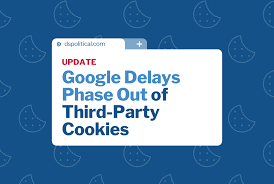
Google has once again postponed its plan to phase out third-party cookies in Chrome, moving the expected start date from the end of 2024 to early 2025. This decision, influenced by feedback from regulatory bodies like the UK’s Competition and Markets Authority (CMA), gives businesses more time to adjust to a future where user privacy is a key concern.
This delay is a chance for marketers and businesses to rethink and improve their digital strategies without any rush. Digital advertising is changing, and new methods that respect user privacy while staying effective are needed.
That said, the repeated postponements of the ‘third-party cookie phase out’ poses a challenge for digital marketers. These cookies are a cornerstone of many marketers’ strategies, which they use for tasks like tailoring ads to user behaviour and measuring campaign effectiveness.
In this guide, we will explore in detail the implications of Google’s delayed plan to eliminate third-party cookies, highlighting the impact on tools like Google Ads and the Google Chrome ecosystem.
What Are Third-Party Cookies?
Third-party cookies are placed on your browser by a domain different from the one you’re currently visiting. These cookies track your activity across multiple websites, gathering data on your browsing habits, preferences, and interests.
These tracking cookies provide crucial data for delivering personalized ads tailored to your behaviour and preferences.
The shift to a cookie-less future doesn’t mean all cookies are disappearing. There are different types of cookies, each used for various purposes to collect distinct types of data.
First-party cookies are created and used by the site you’re visiting to improve your browsing experience, such as remembering your login details or what’s in your shopping cart.
Google third-party cookies mainly benefit advertisers and data brokers, rather than users. These cookies collect third-party data, which helps in creating targeted advertising campaigns.
On the other hand, first-party cookies collect first-party data used directly by the website you’re visiting to enhance your experience.
There’s also zero-party data, which isn’t collected through cookies.
You willingly share this information with companies, like survey responses, account settings, or communication preferences. Zero-party data is highly valuable because it’s provided voluntarily and doesn’t invade privacy, making it the highest-quality user data for businesses to understand their customers better.
ALSO READ- How to Clear Browser Cache and History
The Role of Google Third-Party Cookies
Google third-party cookies have been essential in the world of digital advertising. Here’s a simple breakdown of their primary roles:
- Tracking User Behaviour
Third-party cookies keep track of what you do across different websites. They collect information about your online preferences, interests, and activities over time. This data helps create a detailed profile of you, which can lead to more personalized online experiences. However, this tracking is often done without your consent and can result in a highly identifiable profile.
- Ad Targeting
Using data from third-party cookies, advertisers can show you ads that closely match your interests. This means you’re more likely to see ads relevant to what you like or have looked at before, such as your purchase history. This targeted advertising approach increases your chances of engaging with the ads.
- Analytics
Third-party cookies also help with analytics. They provide valuable insights into how people behave online and the latest trends. This information is crucial for businesses as it helps them make smarter decisions, improve their websites, enhance user experiences, and fine-tune their marketing strategies and product development to better serve their audience.
A Cookie-less Future
In January 2020, Google announced a major plan to eliminate third-party cookies in Chrome by 2022. However, to better meet privacy needs, they adjusted the timeline to phase out these cookies by the end of 2025 completely. Starting January 4, 2024, Google began this process for 1% of users, with plans to extend it to all Chrome users by the third quarter of the year.
This move by Google marks a significant shift towards a more privacy-focused internet. Google isn’t alone in this effort. Other major browsers like Safari, Firefox, and Brave blocked third-party cookies years ago.
However, Google’s influence is much more significant, impacting nearly 3.5 billion users. Other browsers like Microsoft Edge and Opera are also working to enhance user privacy by blocking cookies and introducing other features.
Why is Google Removing Cookies?
Google is removing third-party cookies from Chrome to address growing concerns about online privacy and data protection. While third-party cookies have been around for a long time, they come with several drawbacks, including privacy issues.
The decision aims to create a more privacy-focused internet, ensuring more transparency and user consent in digital advertising.
This move has been planned for a while, but new laws like the Digital Markets Act (DMA), which targets big companies like Google, have likely sped up the process. The DMA identifies Google as a key player in digital platforms and markets, pushing them to make these changes faster.
What Does It Mean to Remove Cookies?
When cookies are used, small text files are saved in your browser to collect data based on your activity. Blocking cookies stops these files from being set, preventing the collection of your data across different websites without your explicit consent.
This change disrupts the traditional methods of online tracking and advertising. First-party cookies, which help improve your experience on a website by keeping you logged in or remembering what’s in your shopping cart, will still work. However, removing Google third-party cookies helps address privacy concerns and ensures your data is not collected without your permission.
Alternatives to Third-Party Cookies
As we move towards a future without Google third-party cookies, innovative solutions are emerging to ensure that advertising can still be personalized and effective.
First-Party Data: It is based on relying more on data collected directly from websites and customer interactions.
Zero-Party Data: It is the voluntary information provided by users, like survey responses and preferences.
Google’s Privacy Sandbox: Launched in 2019, it is a set of technologies designed to replace third-party cookies with more privacy-conscious ways.
These alternatives aim to balance privacy with the ability to track and measure ad performance, ensuring that businesses can comply with regulations while continuing to operate successfully.
The Impact on Google Ads
With Google phasing out third-party cookies, Google Ads is about to undergo a substantial change. In the past, Google Ads used third-party cookie data to target specific users accurately. Now, advertisers who rely on this detailed targeting will need to find new strategies.
- Shift to First-Party Data and Privacy Sandbox: Advertisers will rely more on data collected directly from their websites and customer interactions. Google’s Privacy Sandbox, including initiatives like Topics and contextual advertising, will become essential for targeting based on general interests.
- Embrace Consent Mode: Using Google’s Consent Mode helps advertisers meet privacy requirements and continue accessing Google services. This tool adjusts data collection based on user consent, ensuring compliance, and maintaining trust with users while gathering necessary analytics and conversion data.
ALSO READ- What is HSTS and How to Use HTTP Strict Transport Security?
The Impact of Blocking Third-Party Cookies on Google Chrome
Blocking third-party cookies in Google Chrome is unlikely to drive users away, as demonstrated by Safari and Firefox, which have implemented similar measures without experiencing user loss.
Chrome, with its larger user base, is part of an industry-wide shift towards a privacy-focused internet. This change means data collection methods will evolve, but users won’t notice much difference in their browsing experience. It will matter most for businesses, marketers, and ad tech professionals.
For users, it will enhance privacy without affecting usability. This shift is part of a broader effort to create a more secure digital environment that respects user preferences.
Third-Party Cookie Deprecation Checklist
As the deadline for third-party cookie deprecation nears, follow these steps to prepare:
- Understand the difference between third-party and first-party cookies.
- Explore Alternatives like Privacy Sandbox solutions and server-side tagging.
- Audit Your Site for third-party cookie usage.
- Test your site using Google’s tools to simulate a cookie-less environment.
- Request Time, if needed, to adjust your strategies.
- Ensure compliance with all privacy regulations.
Business
Crypto Startups Bagged Over $2 Billion in Funding Across 503 Deals in Q2 2024: PitchBook
Published
8 months agoon
August 20, 2024

Crypto startups reportedly managed to see bigger investments from venture capital firms in the second quarter of 2024, compared to the first. As per a report, a total of $2.7 billion were invested into crypto startups between April and June this year. This amount is 2.5 percent higher than what was fetched by crypto startups between January and March. A total of 503 deals were finalised in the second quarter of 2024 between up-and-coming Web3 firms and investors.
Paradigm, Brevan Howard Asset Management, Framework Ventures, Maven 11, Dragonfly, and Haun Ventures have been named among the top ten Web3 investors according to a report by PitchBook.
Monad Labs, which calls itself a smart contract platform that scales Ethereum by 1000 times, secured the quarter’s largest funding of $225 million (roughly Rs. 1,889 crore) in April this year. Other startups on the top ten list of secured investments include Farcaster, Zentry, Berachain, Babylon, Sophon, Avail, TradeAlgo, Movement Labs, and Conduit. These startups have been exploring the sectors of decentralised finance (DeFi), blockchain networks, and Web3.
“The increasing deal value yet lower deal count suggests that deal sizes increased overall during the quarter. With positive investor sentiment returning to crypto and barring any major market downturns, we expect the volume and pace of investments to continue increasing throughout the year. Infrastructure startups continued to lead the way in funding during the quarter,” the report stated.
In seed and pre-seed funding as well, investors have not resisted pouring in funds. Arbelos Markets, MegaETH, Morph, and Lagrange are among young startups, presently in the early stage of their respective businesses. Most of these firms are working on scalability solutions for blockchains as well as to bring in more Web3-friendly developer tools.
“The median pre-money valuation for the seed stage was $23 million (roughly Rs. 193 crore); the early stage, $63.8 million (roughly Rs. 535 crore); and the late stage, $40.8 million (roughly Rs. 342 crore) representing changes of +97 percent, +166 percent, and –36 percent respectively, from full-year 2023,” the report noted.
These numbers, PitchBook said, indicate that investment rounds have become highly competitive at the earlier stages but less so at the later stage.
n the Indian web3 startup landscape, BitGet along with CoinSwitch Ventures, and Andreessen Horowitz have poured in investments in recent years.
Business
Bitcoin Price Crosses $61,000, Most Altcoins See Profits as Market Shows Signs of Stabilisation
Published
8 months agoon
August 20, 2024

Bitcoin on Wednesday, August 14 reflected a price gain of 3.15 percent on international exchanges. With this, the value of BTC on international exchanges has come to the price point of $61,060 (roughly Rs. 51 lakh). On Indian exchanges like CoinSwitch, BTC is trading at around $64,576 (roughly Rs. 54 lakh). As per market commentators, this price hike for BTC is fuelled by favourable political developments and increasing institutional interest. In the backdrop of BTC’s rally, majority cryptocurrencies registered gains on Wednesday.
“Bitcoin’s dominance has climbed to 56.29 percent, reflecting a 0.35 percent increase from yesterday, showcasing its continued strength in the market,” Shivam Thakral, CEO of BuyUcoin told Gadgets360. “The approval of Bitcoin exchange-traded funds (ETFs) and a notable increase in stablecoin volumes drive this trend. The ongoing institutional adoption and regulatory clarity will likely bolster investor confidence and drive further growth.”
Ether saw a small loss of two percent in the last 24 hours. With this, the price of ETH has come to $2,452 (roughly Rs. 2.05 lakh). Analysts call this minor price decline negligible in a broader picture for ETH’s price trajectory.
“The crypto market saw an uptick as the U.S PPI data came in lower than expected, which is bullish for the market. The focus now shifts to the US CPI data, set to be released today. Notably, during the last CPI data release, the market experienced a significant upside,” the CoinDCX market team told Gadgets360.
Binance Coin, Ripple, Dogecoin, Cardano, Tron, Avalanche, and Shiba Inu — all recorded gains.
Chainlink, Leo, Near Protocol, Polygon, and Stellar also clocked profits.
“Buyers are actively purchasing at support levels, taking advantage of the dip,” Edul Patel, CEO of Mudrex told Gadgets360.
In the last 24 hours, the overall crypto market cap has risen by 2.50 percent. With this, the sector valuation hit $2.14 trillion (roughly Rs. 1,79,55,349 crore), as per CoinMarketCap.
Among loss-making cryptocurrencies, Tether, Solana, Polkadot, Litecoin, Cosmos, and Uniswap.
“Crypto’s Fear and Greed Index remains entrenched in the fear zone at 30, while the RSI for Bitcoin sits in the neutral zone. Bitcoin dominance is consolidating above 57%, signaling that altcoins may continue to lag in the near term,” Vikram Subburaj, CEO, Giottus crypto platform told Gadgets360.
Business
TRAI Directs Indian Telcos to Stop Spam Calls, Blacklist Callers Using Blockchain Technology
Published
8 months agoon
August 20, 2024

The Telecom Regulatory Authority of India (TRAI) is taking active measures to control the menace of spam calls in the country. In a recent move, the country’s telecom watchdog has issued a directive to all network providers, asking them to stop promotional calls from unregistered callers, said an official statement released by TRAI said on August 13. As part of this order, TRAI has also asked telecom firms operating in India to blacklist spam calls, many of which pose financial threats to the nationals.
As per this directive from TRAI, all telecom operators in India are required to curb promotional calls whether they are pre-recorded, computer generated or otherwise from Unregistered Telemarketers (UTMs) or unregistered senders.
“This decisive action by TRAI is expected to significantly reduce spam calls and provide relief to consumers,” the statement signed by TRAI Secretary, Atul Kumar Chaudhary said.
The telecom regulator has also decided on the consequences for those who break this rule. As per its notice, any unregistered telemarketer found exploiting its telecom resources could lose all their phone connection resources. The network disconnection will be overseen and implemented by the Originating Access Provider (OAP) and could last for two years. During the blacklisted period, these UTMs will not be issued new telecom resources by any access provider.
TRAI Turns to Blockchain for Spam Call Control
The blockchain technology, also known as the Distributed Ledger Technology (DLT) has been adopted by the TRAI as part of its efforts to curb the problem of increased spam calls in India.
In its statement, the telecom regulator said, “information regarding blacklisting of the Sender shall be shared by the OAP with all other Access Providers on DLT platform, within 24 hours.” After this, all the telecom resources given to the sender will be disconnected.
In addition, UTMs making commercial voice calls will also be migrated to TRAI’s blockchain platform within 30 days of this notice’s issuance. UTMs have been asked to then submit compliance report within seven days thereafter. The news about TRAI launching its blockchain platform for these purposes first came in November 2023.
“All access providers have been directed to comply with these directives and submit regular updates on the actions taken on the 1st and 16th of every month,” TRAI’s statement added.
Commenting on TRAI’s adoption of blockchain, Sharat Chandra told Gadgets360 that this is TRAI’s attempt to ensure that only legitimate entities can send bulk communications, thereby protecting consumers from fraudulent activities. Chandra is the founder of blockchain-focussed investment firm called EmpowerEdge Ventures.
“The implementation of blockchain by TRAI is poised to significantly improve the daily lives of citizens by fostering a safer and transparent communication environment,” Chandra said.
Branding
India Restores Binance Access After Exchange Cleared $2.25 Million Fine for PMLA Violations
Published
8 months agoon
August 20, 2024

Binance users in India can now access the exchange’s website after being blocked in December 2023. The crypto exchange, touted as the largest in the world, has finally completed its registration with India’s Financial Intelligence Unit (FIU) and has also cleared the penalty of $2.25 million (roughly Rs. 18.8 crore) that was levied on it in June this year. The fine was levied as Binance did not adhere to India’s Prevention of Money Laundering Act, 2002 (PMLA). With this, Binance is now up and running in India’s web space.
For Binance, this registration in India marks its 19th global licence. Sweden, Kazakhstan, France, and Dubai are among other locations where the exchange holds operational permits.
Binance CEO Richard Teng said that the company realises the vitality and potential of India’s virtual digital assets (VDAs) market, commenting on its India registration.
“Our registration with the FIU-IND marks an important milestone in Binance’s journey. This alignment with Indian regulations allows us to tailor our services for Indian users. It is a privilege to extend the reach of our platform to this thriving market, supporting India’s continued VDA evolution,” Teng noted.
Binance’s registration with the FIU in India could have been completed in May. However, upon probe on the exchange, Indian authorities identified that Binance was not compliant with the PMLA laws, that are mandated for crypto firms to comply with in order to keep their operations running in the country.
As part of the PMLA laws, crypto exchanges are required to have their users complete their KYCs and monitor trading activities. Upon identifying suspicious transactions, the PMLA requires exchanges to report their observations to the relevant authorities.
Now that Binance has cleared the fine for being non-compliant with India’s PMLA laws, its access has been completely restored for Indian users.
“Implementing these industry-leading frameworks in the Indian market can meaningfully contribute to the local context and elevate market standards for all crypto exchanges. Not only is this beneficial for the Indian VDA industry, but, most importantly, it ensures stronger protections for users,” the exchange noted.
Despite this development, Binance’s road ahead still has some bumps in India. The company, for instance, does not still have a physical presence in the country. In fact, Binance is scouting for locations where it could set up its headquarters.
In addition, Binance was recently served a notice for Rs. 772 crore (roughly $92 million) in GST charges. The Ahmedabad zonal unit of India’s Directorate General of GST Intelligence (DGGI) issued this notice to the multi-national crypto exchange for levying a platform fee charge on Indian traders that reportedly reached the amount of at least Rs. 4,000 crore and was transferred to a foreign-based company.
Binance’s response to this GST notice remains awaited.

ChatGPT: Here’s All You Need to Know About the AI Chatbot

GPT4 game changer features in 2024

ICANN Reserves ‘.internal’ Domain for Private Use—Here’s Why

ChatGPT: Here’s All You Need to Know About the AI Chatbot
Senua’s Saga: Hellblade II Review: Ninja Theory’s Flawed, but Uncompromising Sequel Is a Cinematic Achievement
How to Use Twitter’s New Bitcoin Tipping Feature
Trending
-

 Business7 months ago
Business7 months agoChatGPT: Here’s All You Need to Know About the AI Chatbot
-
Entertainment8 months ago
Senua’s Saga: Hellblade II Review: Ninja Theory’s Flawed, but Uncompromising Sequel Is a Cinematic Achievement
-
Cryptocurrency8 months ago
How to Use Twitter’s New Bitcoin Tipping Feature
-
Business8 months ago
Database Admins See Brighter Job Prospects Amid IT Challenges
-
Business8 months ago
Bitcoin Price Crosses $61,000, Most Altcoins See Profits as Market Shows Signs of Stabilisation
-
How-To8 months ago
How to Add Links to Your Instagram Stories
-
Computer8 months ago
How to Enable Chrome Dark Mode on Android, iPhone, Windows, Mac
-
Entertainment8 months ago
Lenovo Legion Go Review: Best Windows Handheld?
-
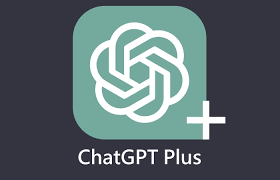
 Computer7 months ago
Computer7 months agoIs a ChatGPT Plus subscription worth it?
-

 Business7 months ago
Business7 months agoGPT4 game changer features in 2024
-
Artificial Intelligence (AI)8 months ago
How to avoid online scams and what to do if you become a victim
-
Business8 months ago
How to Check ITR Filing – IT Return Status Online
